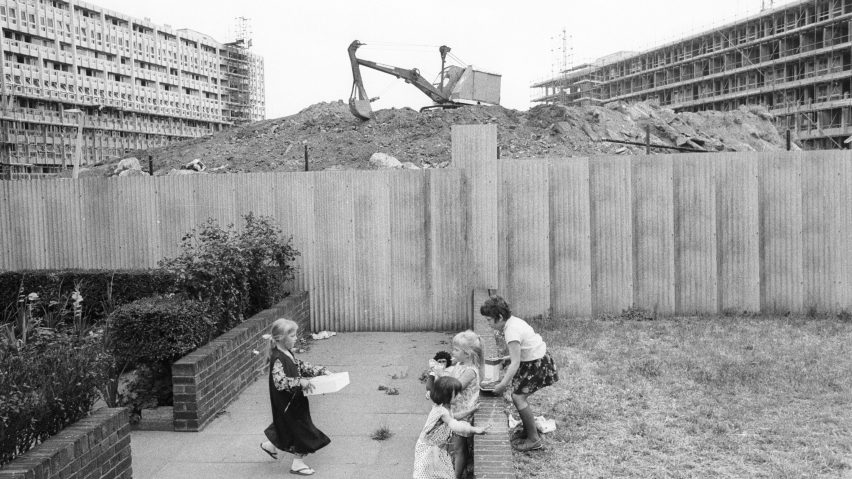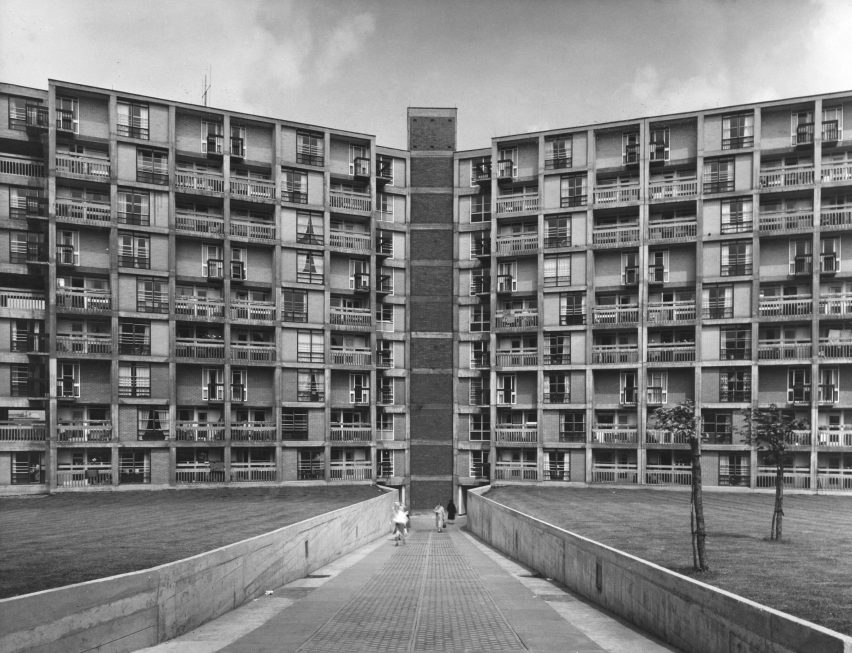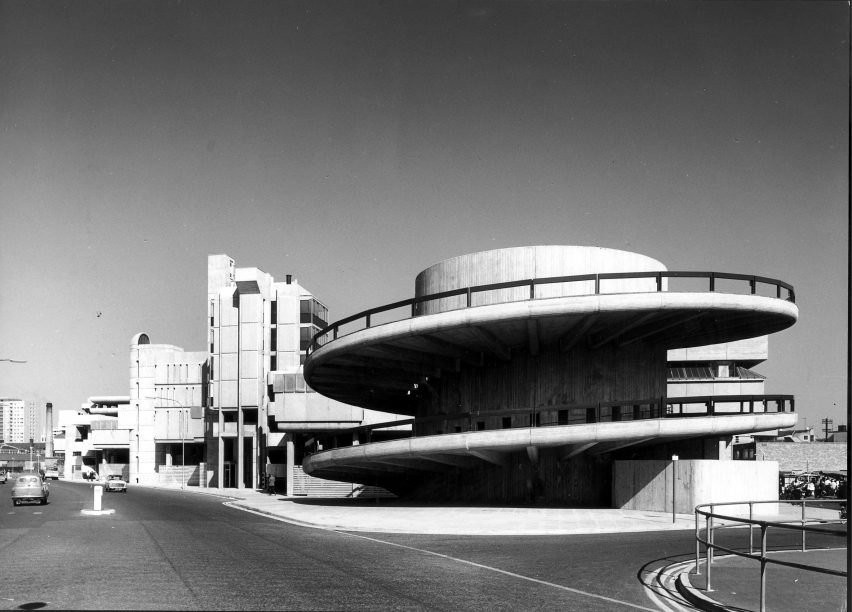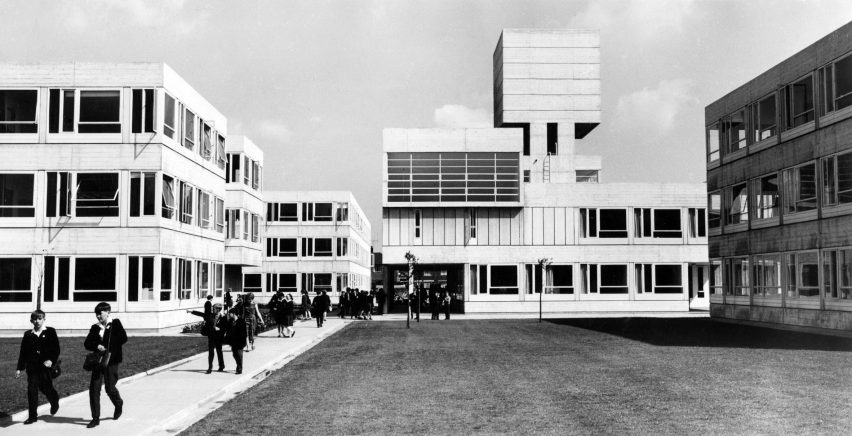
Post-war architecture shouldn't take the blame for political failures, says Owen Hopkins
With the demolition of Robin Hood Gardens now underway and the tragedy of the Grenfell Tower fire still fresh, writer and curator Owen Hopkins has called for politicians to stop using Britain's post-war architecture as a scapegoat for today's problems.
Hopkins is senior curator at Sir John Soane's Museum, and is also the author of Lost Futures: The Disappearing Architecture of Post-War Britain, which examines the demolition of buildings constructed after the second world war.
Speaking to Dezeen, he said that issues with building regulations and social policy, rather than design, are too often leading to the "wanton and needless destruction" of these types of structures.
"Post-war architecture still remains a convenient scapegoat for the failures of our own era, whether in social policy or in ensuring that buildings in which hundreds of people live meet basic fire safety tests," Hopkins told Dezeen.
Much of the UK's remaining post-war housing is currently being targeted for redevelopment – former prime minister David Cameron even made it one of his governmental pledges back in 2016 to demolish, or as he called it "regenerate", 100 of the country's so-called sink estates.
Alison and Peter Smithson-designed Robin Hood Gardens became one of the best-known examples. Despite a high-profile campaign to save the historic estate, it was rejected for listing and is now being pulled down.

According to Hopkins, post-war housing is underrepresented on the National Heritage List for England – a point that was also recently made by Simon Smithson, the architects' son. One reason for this, he said, is that these buildings aren't seen to have enough "architectural interest".
"For a building to be deemed 'significant', it needs to be of 'architectural interest' for its 'design', 'decoration' and 'craftsmanship', and exhibit 'innovation' and 'virtuosity'," explained Hopkins.
"Judging a building by these terms, it doesn't take much to see a clear bias against post-war architecture, and housing in particular, serving to exclude many highly-successful estates from statutory protection."
Hopkins claimed the reactions of politicians, after the fatal fire at Grenfell Tower in west London, will have done little to influence public attitudes towards this type of architecture.
He cited an article written for The Guardian, in which London mayor Sadiq Khan blamed the 1970s architecture for the fire that has killed at least 80, but glossed over the fact that the 2016 renovations are thought by many experts to be responsible for spreading the flames.
"Nowadays, we would not dream of building towers to the standards of the 1970s, but their inhabitants still have to live with that legacy," wrote Khan. "It may well be the defining outcome of this tragedy that the worst mistakes of the 1960s and 1970s are systematically torn down."
Hopkins said: "It was revealing that in an article written shortly after the fire, Sadiq Khan chose to lay much of the blame at the door of the house-builders of the post-war era. As many have pointed out, the irony of his statement is that if the tower hadn't been re-clad, then the fire wouldn't have spread with anywhere like the same ferocity."
"There are lessons to learn from Grenfell at every level – from the way council housing is managed and maintained, to the efficacy of building regulations – but underlying all of this is the simple fact that we can't keep looking upon council housing, and by implication the people who live in it, as somehow second-rate," he added.

Released earlier this year, Hopkins' book Lost Futures offers a closer look at 35 post-war buildings, including schools, libraries, offices, shopping centres and industrial spaces, as well as housing.
Black-and-white photography of the buildings, all built between 1945 and 1979, are accompanied by a short text explaining their origins and decline. They range from the well-known to the hardly known at all and destruction "celebrated and lamented depending on our point of view".
Residential schemes featured in the book include James Stirling's Runcorn New Town, completed in 1977 and razed just 15 years later, and the 1961-built Park Hill estate in Sheffield by Jack Lynn and Ivor Smith, which has undergone significant refurbishment works by Hawkins\Brown and Studio Egret West.
There are also lesser-known examples, like the Central Hill estate in Crystal Palace, south London, designed by local authority architect Rosemary Stjernstedt.
"Despite its elegant arrangement of stepped blocks on the dramatically sloping sites to maximise natural light, the estate was deemed by the assessors as not innovative enough to warrant listing," said Hopkins.
"Yet in many ways, that is the reason for its success. It doesn't try to do too much, but makes use of a few different architectural elements to create a decent, humane place to live, which, despite the council's lamentable maintenance, has stood the test of time and deserves to be protected far more than many buildings on the list."

The book was published by the Royal Academy of Arts, where Hopkins headed up the architecture programme, before joining Sir John Soane's Museum late last year.